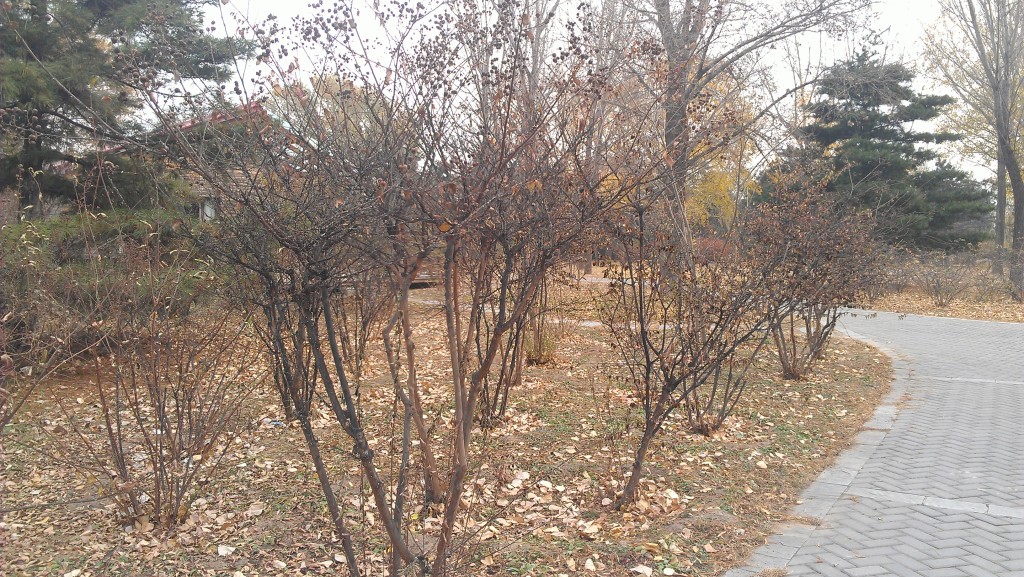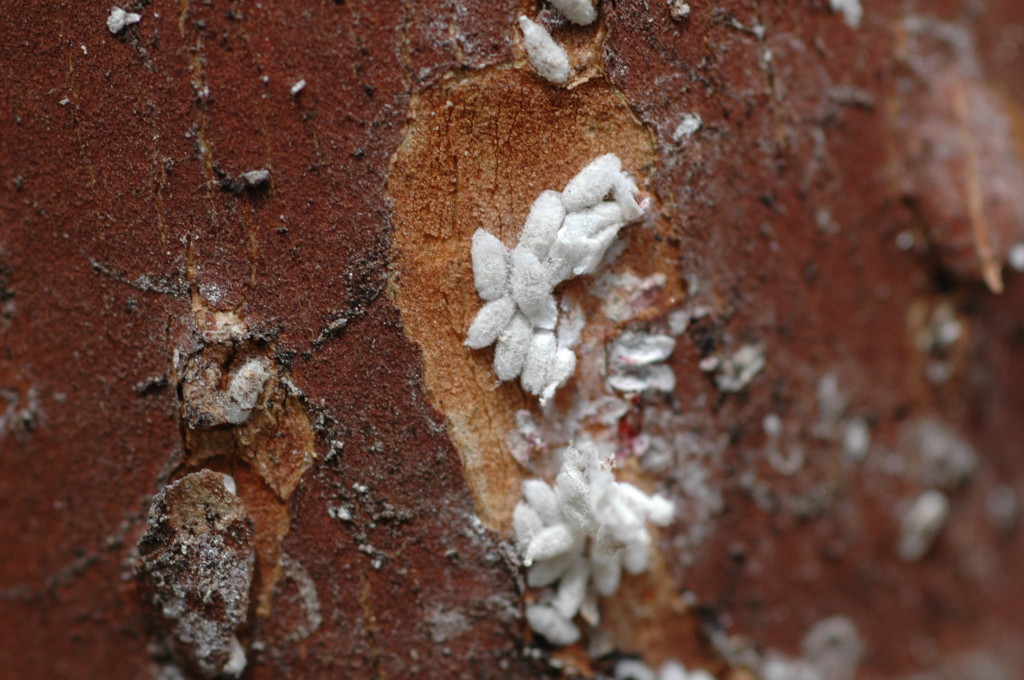Texans (and many other southerners) love their crape myrtles! And why not? It’s one of the few trees that bear colorful flower displays through much of the summer, come in a variety of stunning colors, is easy to grow, and until now has been relatively pest free. Unfortunately, the pest-free reputation is changing with the advent of a new exotic scale pest.

An urban lan scape planting of crape myrtles in Beijiing, China. The black trunks are evidence of a heavy infestation of crape myrtle bark scales.
Several years ago I wrote about a new scale pest of crape myrtle. At that time we speculated that it was a newly introduced species of Eriocccid scale from Asia called crape myrtle bark scale (CMBS). Today, thanks to help from researchers from the University of Arkansas and the USDA’s Animal and Plant Health Inspection service, we are a little closer to confirming those suspicions. Molecular and microscopic examinations are pointing to an exotic origin for this new scale.
Dr. Mengmeng Gu, Extension Horticulture specialist with Texas A&M AgriLife, had a chance to see these scales in their native Asian environment in a trip to China last year. The messy crape myrtles she saw there stimulated her interest in learning more about the scale here in Texas. As a result, she and I cooperated with the University of Arkansas to put out new Texas and Arkansas fact sheets on this pest this year.

Crape myrtle bark scale is a small white scale that bleeds pink when crushed. They can be found on the trunks branches and twigs of crape myrtle (Photo by Erfan Vafaie).
The year 2013 was a busy one for CMBS. Thanks in part to Dr. Gu’s network of horticulture colleagues, the scale was reported last year for the first time from sites in Arkansas, Louisiana, and the Memphis area of Tennessee. In addition, the scale now appears to be established outside the Dallas/Fort Worth area (where it was first found) in Tyler, Longview, and College Station, Texas, as well as in Ardmore, OK.
Chances are that, if you live in the South, you will eventually experience this pest. If you are interested in learning more about CMBS, Dr. Gu asked me to talk about this pest yesterday in a Webinar now posted on YouTube. In the webinar I discuss the appearance and damage caused by CMBS, how it is spread, and what is known about control. Control recommendations are also listed in my previous post as well as the fact sheets mentioned above.
If you encounter this scale in areas outside those listed here, I would be interested in knowing about it. We hope to eventually have a website where sightings can be more easily reported.